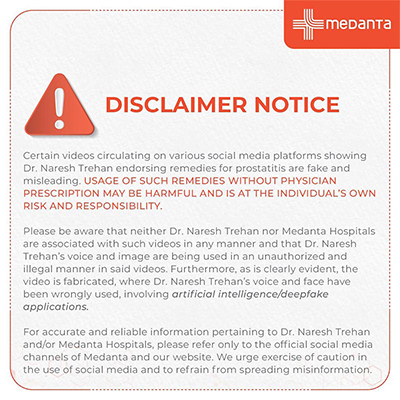Radiation therapy is a crucial treatment modality for many cancer patients. It implies using high-energy radiation to destroy cancer cells and shrink tumours. One of the most advanced and effective radiation therapy techniques is VMAT (Volumetric Modulated Arc Therapy). In this blog, let's delve into the world of VMAT, understanding its indications, the procedure itself, its benefits, risks, and what makes it so unique.
What is VMAT and its Indication
VMAT, or Volumetric Modulated Arc Therapy, is a cutting-edge radiation therapy technique that delivers precise radiation doses to cancerous tumours. It is primarily used to treat various types of cancer, including prostate, lung, breast, head and neck, and brain tumours. VMAT is especially beneficial for tumours near critical structures, as it allows for better targeting of tumours while minimizing damage to healthy surrounding tissues.
How Does it Work?
VMAT utilizes a linear accelerator machine, which rotates around the patient, delivering radiation from multiple angles. This rotation allows continuous motion of the machine's gantry and simultaneous modulation of the radiation beam's intensity. The treatment planning system calculates the optimal dose distribution based on the tumour's size, shape, location, and the patient's anatomy. The machine delivers the radiation in a 360-degree arc, with varying dose rates and beam shapes, to target the tumour precisely while sparing healthy tissues.
Preparation Before the Procedure
Before undergoing VMAT, the patient will have a comprehensive evaluation by a radiation oncologist. This evaluation includes a thorough physical examination, medical history review, and imaging tests such as CT scans or MRI. The imaging helps define the tumour's location, size, and proximity to critical structures. The patient may also need minor permanent marks on their skin, called tattoos or fiducial markers, to ensure accurate and consistent positioning during treatment. The radiation oncology team will also provide detailed instructions regarding dietary restrictions, medication usage, and any necessary lifestyle modifications.
What Happens During the Procedure?
During the VMAT procedure, the patient lies comfortably on a treatment table. The linear accelerator machine, controlled by a skilled radiation therapist, moves around the patient in a precise and synchronized manner. The treatment session typically lasts a few minutes, during which the patient will be alone in the treatment room. It is essential to remain still and relaxed throughout the session to ensure you receive accurate radiation. The machine produces a buzzing or clicking sound but does not cause discomfort. The radiation therapist monitors the treatment from an adjacent room and can communicate with the patient through an intercom system.
What Happens After the Treatment
After completing a VMAT session, patients can resume their daily activities without restrictions. Some patients may experience mild fatigue, which they can manage with adequate rest and a balanced diet. Regular follow-up visits with the radiation oncologist are crucial to monitor the treatment's effectiveness and address any side effects. The oncology team will perform periodic imaging scans to evaluate the tumour's response to the therapy. Communicating any concerns or symptoms to the healthcare provider promptly is essential.
What are the Benefits of the Procedure
VMAT offers several advantages over traditional radiation therapy techniques. Firstly, it allows for highly conformal dose distribution, enabling better tumour targeting while sparing healthy tissues. This precision minimizes the chance of damage to critical structures and reduces the likelihood of side effects. Additionally, VMAT enables shorter treatment times than conventional techniques, increasing patient comfort and convenience. The ability to modulate the radiation beam's intensity continuously ensures optimal dose coverage, even for complex tumour shapes. Overall, VMAT provides enhanced treatment outcomes and improved quality of life for cancer patients.
What are the Risks of the Procedure?
While VMAT is generally safe and well-tolerated, there are potential risks associated with the treatment. The most common side effects include fatigue, skin reactions, and temporary hair loss in the treatment area. Usually, these side effects are temporary and resolve after completing the treatment course. In rare cases, patients may encounter long-term side effects, like fibrosis or radiation-induced secondary cancers. However, the benefits of VMAT in effectively treating cancer often outweigh the potential risks. The radiation oncology team will closely monitor the patient throughout treatment to minimize and manage any adverse effects.
What Makes it So Unique?
VMAT stands out as a revolutionary radiation therapy technique because it delivers highly precise radiation doses while optimizing treatment efficiency. Its continuous rotation and modulation of the radiation beam allow for better tumour coverage and the sparing of healthy tissues. Compared to other advanced techniques like IMRT (Intensity-Modulated Radiation Therapy) and 3D CRT (3D Conformal Radiation Therapy), VMAT offers shorter treatment times and increased patient comfort. The unique combination of accuracy, speed, and versatility makes VMAT an invaluable tool in the fight against cancer.
In conclusion, VMAT is a revolutionary radiation therapy technique that offers precise tumour targeting and minimal damage to healthy tissues. With its unique ability to continuously modulate the radiation beam, VMAT provides shorter treatment times, increased treatment efficiency, and improved patient comfort. While there are potential risks and side effects associated with VMAT, the benefits of effectively treating cancer outweigh the drawbacks. If you or a loved one is undergoing radiation therapy, consult with a radiation oncologist to determine if VMAT is a suitable treatment option.
FAQs
What is the difference between VMAT and IMRT?
VMAT and IMRT are both advanced radiation therapy techniques. The main difference lies in the delivery method. VMAT utilizes a rotating machine continuously delivering radiation while IMRT uses multiple fixed beams. VMAT offers shorter treatment times and increased treatment efficiency compared to IMRT, and spare more normal tissue in comparison to IMRT.
What are the disadvantages of VMAT?
VMAT is very advanced treatment delivering radiation more precisely.
So if should be practiced with experienced team and with image guidance. With image guidance we target the tumor exactly before firing.
Are there any long-term side effects of VMAT?
While the risk of long-term side effects is relatively low, some patients may experience fibrosis or radiation-induced secondary cancers. However, the oncology team carefully plans and delivers the treatment to minimize such risks.
What are the side effects of VMAT radiation?
The most common side effects of VMAT radiation include fatigue, temporary hair loss in the treatment area, and skin reactions. These side effects are usually temporary and resolve after completing the treatment course.
Is VMAT radiation suitable for all patients?
This therapy may not be suitable for all cancer patients or all types of cancer. The decision to use VMAT depends on several factors, including the tumour's characteristics and the patient's general health.


